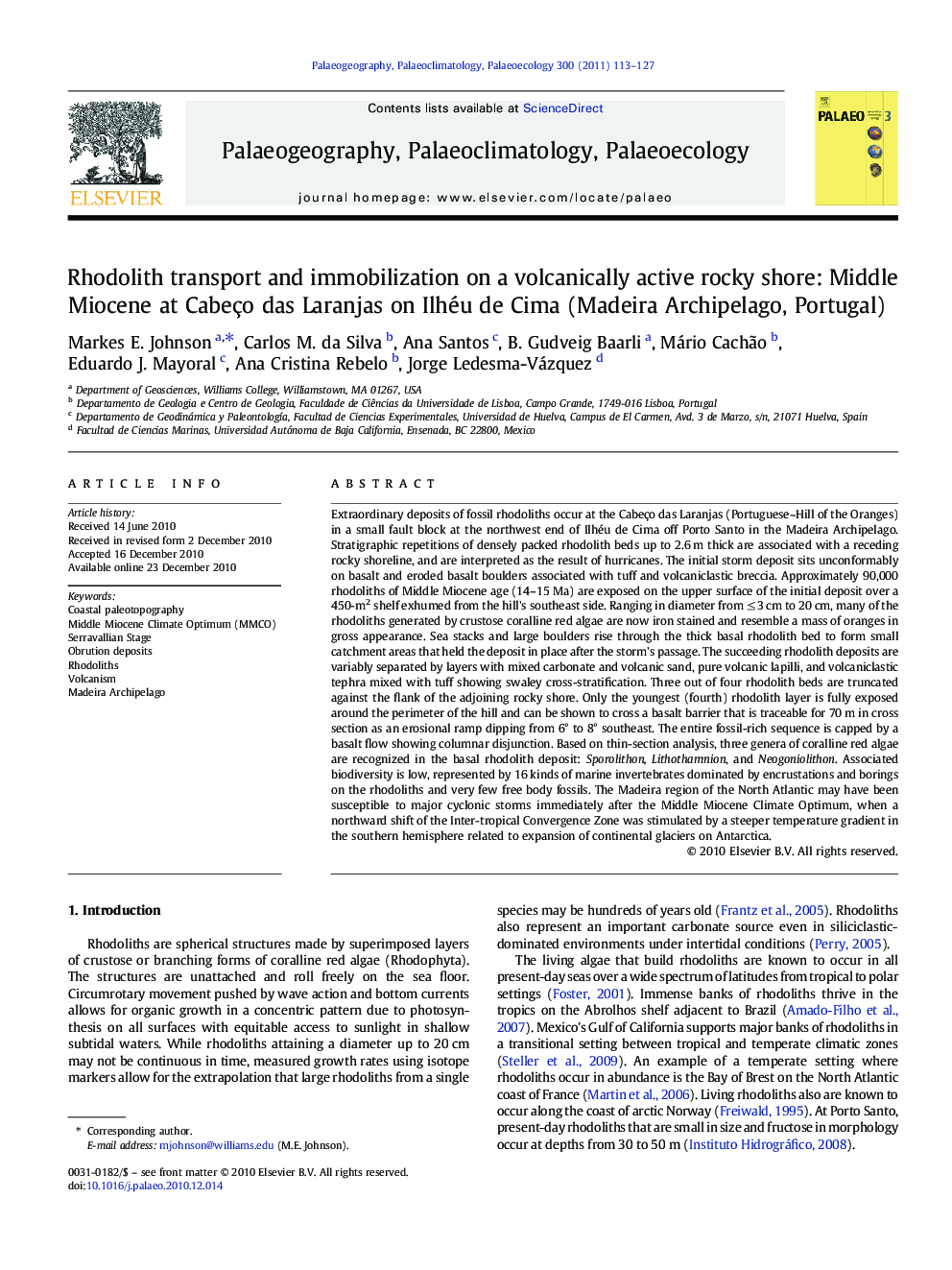| کد مقاله | کد نشریه | سال انتشار | مقاله انگلیسی | نسخه تمام متن |
|---|---|---|---|---|
| 6350637 | 1622263 | 2011 | 15 صفحه PDF | دانلود رایگان |
عنوان انگلیسی مقاله ISI
Rhodolith transport and immobilization on a volcanically active rocky shore: Middle Miocene at Cabeço das Laranjas on Ilhéu de Cima (Madeira Archipelago, Portugal)
دانلود مقاله + سفارش ترجمه
دانلود مقاله ISI انگلیسی
رایگان برای ایرانیان
موضوعات مرتبط
مهندسی و علوم پایه
علوم زمین و سیارات
فرآیندهای سطح زمین
پیش نمایش صفحه اول مقاله

چکیده انگلیسی
Extraordinary deposits of fossil rhodoliths occur at the Cabeço das Laranjas (Portuguese~Hill of the Oranges) in a small fault block at the northwest end of Ilhéu de Cima off Porto Santo in the Madeira Archipelago. Stratigraphic repetitions of densely packed rhodolith beds up to 2.6 m thick are associated with a receding rocky shoreline, and are interpreted as the result of hurricanes. The initial storm deposit sits unconformably on basalt and eroded basalt boulders associated with tuff and volcaniclastic breccia. Approximately 90,000 rhodoliths of Middle Miocene age (14-15 Ma) are exposed on the upper surface of the initial deposit over a 450-m2 shelf exhumed from the hill's southeast side. Ranging in diameter from â¤Â 3 cm to 20 cm, many of the rhodoliths generated by crustose coralline red algae are now iron stained and resemble a mass of oranges in gross appearance. Sea stacks and large boulders rise through the thick basal rhodolith bed to form small catchment areas that held the deposit in place after the storm's passage. The succeeding rhodolith deposits are variably separated by layers with mixed carbonate and volcanic sand, pure volcanic lapilli, and volcaniclastic tephra mixed with tuff showing swaley cross-stratification. Three out of four rhodolith beds are truncated against the flank of the adjoining rocky shore. Only the youngest (fourth) rhodolith layer is fully exposed around the perimeter of the hill and can be shown to cross a basalt barrier that is traceable for 70 m in cross section as an erosional ramp dipping from 6° to 8° southeast. The entire fossil-rich sequence is capped by a basalt flow showing columnar disjunction. Based on thin-section analysis, three genera of coralline red algae are recognized in the basal rhodolith deposit: Sporolithon, Lithothamnion, and Neogoniolithon. Associated biodiversity is low, represented by 16 kinds of marine invertebrates dominated by encrustations and borings on the rhodoliths and very few free body fossils. The Madeira region of the North Atlantic may have been susceptible to major cyclonic storms immediately after the Middle Miocene Climate Optimum, when a northward shift of the Inter-tropical Convergence Zone was stimulated by a steeper temperature gradient in the southern hemisphere related to expansion of continental glaciers on Antarctica.
ناشر
Database: Elsevier - ScienceDirect (ساینس دایرکت)
Journal: Palaeogeography, Palaeoclimatology, Palaeoecology - Volume 300, Issues 1â4, 1 February 2011, Pages 113-127
Journal: Palaeogeography, Palaeoclimatology, Palaeoecology - Volume 300, Issues 1â4, 1 February 2011, Pages 113-127
نویسندگان
Markes E. Johnson, Carlos M. da Silva, Ana Santos, B. Gudveig Baarli, Mário Cachão, Eduardo J. Mayoral, Ana Cristina Rebelo, Jorge Ledesma-Vázquez,